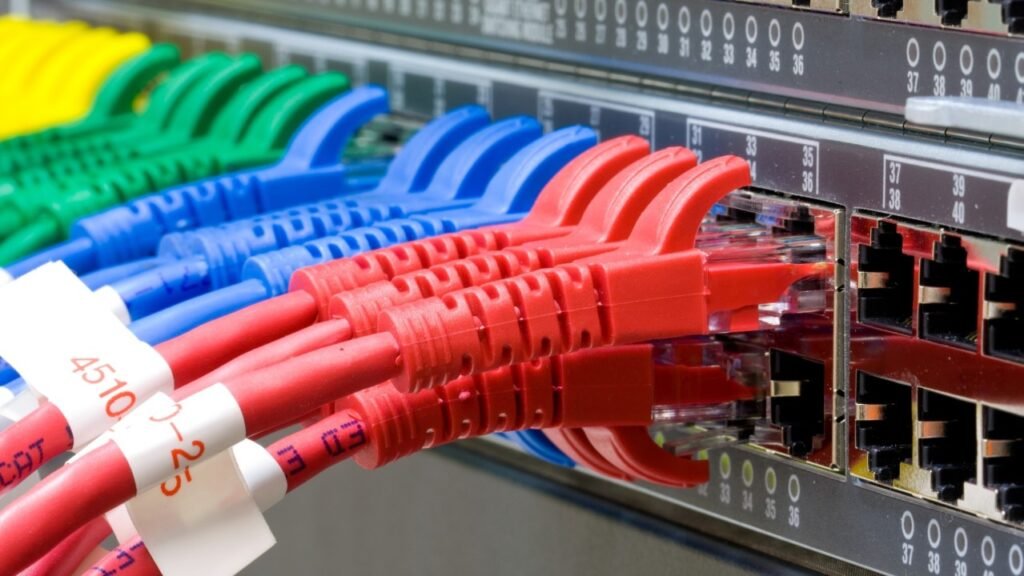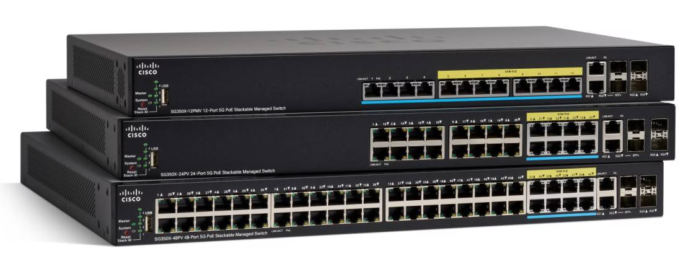In the modern networking world switches have made themselves the very basic technologies by propagating data to different devices within a local area network (LAN). Switches are a very important hardware piece in network design, for it helps in optimizing and managing data as well as aiding that the packet of data one sends along gets sent to the appropriate destination encrypted.
Cisco and Aruba are two primary manufacturers of perhaps the best network switches in the industry and will be discussed in this paper, together with the aforementioned functionalities and benefits. Some common questions to be answered in the discussion are the few questions.
What is a Network Switch?
A networking device is just a switch that is found waving between devices such as computers, printers, or other network-enabled devices for installation in a local area network (LAN). It operates at Layer 2 (Data Link Layer) under OSI model protocols, but it has turned out to handle routing at Layer 3 (Network Layer). Switches differ a lot from hubs and routers since they do not transmit data to all devices created-joined, but on some basis, they address the data packets to reach the actual device they must go to using the MAC (Media Access Control) addresses.

How Do Network Switches Work?
It is thus possible to break down data into packets connected using a switch that operates by employing packet switching technology. The switch reads the destination address (MAC address) of the arriving packet and then forwards it out the port that was uniquely associated with that particular address on the device.
- Learning Process: The first time a device is connected to a switch, the MAC addresses against each port are recognized by a switch that starts constructing a MAC address table.
- Forwarding Process: The switch has indeed already learnt all of the devices’ MAC addresses so that it should be able to forward packets of traffic directly to the correct destination device.
- Double Spanning Tree Protocol: Also, switches implement techniques like Spanning Tree Protocol to avoid loops in a network so that data packets, when moving from source to destination, do not suffer from congestion within the network, leading to the breakdown.
Types of Network Switches
Different switches generally have to be divided into categories based on the types of services and features they provide:
- Unmanaged switches: These are just stopgap arrangements that are supposed to allow you to add to existing configurations without interfering with the rest. In other words, they stay totally out of the way. They’re ideal for home networks and small work groups.
- Managed switches: There is much sophistication in these compared to unmanaged kind. These are switches with switch management which will feature more complex functionality such as QoS, VLANs, and network monitoring and security protocols. Examples for these are complex systems used within large or complex enterprise networks.
- Layer 3 switches: Such switches operate in layer 2 and 3 of the OSI model and often route between various subnets in larger networks. Thus there will always be hardware-based macro flow control of network traffic.
Benefits of Network Switches
- Performance Optimization: Misconceptions about data traffic control are eliminated by Switch. With regard to managing pathways for the data very efficiently, it lessens collisions and improves overall performance of networks.
- In network security: This is stricter security with protection such that it sends data to the correct device, and they grasp the minority risk wherein data is cut off in the middle.
- Scalability: What one needs is the network switch, which will aid him/her is simply adding a device on the network and not have any problems on performance. For managed switches, particularly suited for VLANs, segmentation helps to make better networks. Each VLAN can still be copied over to a set of one or two other switches.
- Low Latency: Switches help reduce latency in the network by ensuring that any two devices communicate through each other on the same network segment.
- Cost-Effective: Switches are lower priced than routers, but they support a large number of devices with respect to minimum or no expense for maintenance and configuration.
Cisco and Aruba: Industry Leaders in Secure Network Switches
Having established a position of leadership in the network infrastructure market, Cisco and Aruba provide a perfect set-up of high-performance and secure network switches for enterprises, data centers, and high-demand networks.

Cisco Network Switches: A Secure Network Solution
One of the better-known names when it comes to networking technology, offering the very best in good-quality products that deliver performance-as well as security -in this successful debate-Cisco even prides its networking switches with advanced security features including:
- Cisco Identity Services Engine (ISE): Ensure that only authorized devices are displaying their authority on the network by controlling access of device identity.
- Advance Threat Defense: Helps protect customers from malware and other cyber threats by Cisco with advanced threat detection and prevention devices, inclusive of network intrusion detection and prevention (IDS/IPS).
- Segmentation and Zero Trust Architecture: Hence, Cisco switches offer support for network segmentation and for zero-trust principles, which means, although compromised, the device keeps the network secure.
- Software-Defined Access (SD-Access): Given that numerous flow-based policies developed perform the switch ports in most time configurations, all real-time sections can be compartmentalized by automatically applying the policy at the moment. This means that instead of dealing with thousands of lines of CLI each time policies get changed, the configuration now has a central controller.
- Encryption: One feature that Cisco’s products are known for comes from beefed-up encryption that is said to make sure that data transmitted across the company’s network is well-secured.
Aruba Network Switches: Focus on Security and Simplicity
Aruba switches by Hewlett Packard Enterprise (HPE) is a set of cutting-edge switches which are highly optimized for outstanding performance and security in the modern hybrid workspace. Aruba switches offer:

- Aruba ClearPass: It’s an intelligent NAC structure that allows administrators to clearly define and also wisely execute authentication and authorization policies for device, superior network security.
- On the Device-Built Security: Advanced dynamic segmentation and other active security features on Aruba switches ensure user and device role-based separation of network traffic to keep sensitive data safe and secure.
- AI-enhanced Security Analytics: Aruba uses artificial intelligence and machine learning to identify behavioral patterns that indicate possible threats and automatically respond before a potential threat multiplies causing a huge number of false positives.
- Easy Network Management: Aruba comes with cloud-managed switches along with Aruba Central’s ability to place all responsibilities for security and networking performance onto one platform, essentially reducing the network complexity.
Conclusion
Enterprise switch as an integral part of a modern network helps in making data transmission efficient, improves performance and provides a secure backdrop. The world’s major technology stars, from Cisco and Aruba, are more than enough in offering promising technology assuredness among networks- technologies promising performance with unfailing advanced protection
However, there is none so good as Cisco and Aruba when it comes to secure and weighty network solutions that address issues like scalability and manageability for organizations that would; therefore, choose well-made, reliable switches for itself that will afford both today and the future.




This guide is amazing! It helped me decide which Cisco switch to get for my office network. Super informative and easy to understand.